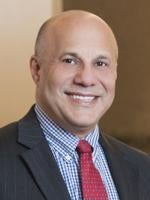Is a debtor required to pay default rate interest when it reinstates a loan under a plan of reorganization? According to a recent Eleventh Circuit Court of Appeals decision, In re Sagamore Partners, Ltd., 2015 U.S. App. LEXIS 15382 (Aug. 31, 2015), the answer depends upon the underlying loan documents and applicable non-bankruptcy law.
In Sagamore, the debtor owned a hotel located in Miami Beach. The debtor had borrowed $31.5 million from Arbor Commercial Mortgage, LLC (“Arbor”) for renovations. Arbor subsequently assigned the underlying Note and Loan Agreement to a JPMorgan entity (“JPMCC”).
The Loan Agreement required interest only payments until 2016, when all outstanding payments would become due. The Loan Agreement further provided that upon an “Event of Default”, Sagamore would be required to pay default rate interest of 11.54%. Included within the definition of “Event of Default” was failure by Sagamore to make any regularly scheduled payment when due.
Sagamore defaulted in late 2009 and filed its Chapter 11 petition in October 2011. JPMCC filed a proof of claim demanding $31.5 million, plus, among other things, pre-default rate interest, default rate interest, costs and attorneys’ fees. Sagamore’s first plan of reorganization provided that it would cure its admitted default and reinstate the loan by paying accrued pre-default rate interest. The exclusion of default rate interest was not surprising given that the difference between non-default rate and default rate interest was over $5 million.
JPMCC objected to the exclusion of default rate interest, and the bankruptcy court denied confirmation. Sagamore’s amended plan proposed a fund which would contain sufficient money to cure and reinstate the indebtedness “whatever the amount is, as determined by the Court, and on the terms and conditions imposed by the Court.” The bankruptcy court confirmed the amended plan. The court also held that because JPMCC had failed to provide sufficient notice of Sagamore’s default, JPMCC had no contractual right to default rate interest, attorneys’ fees and other costs. The district court affirmed the bankruptcy court’s conclusion that JPMCC had forfeited its right to default-rate interest.
The Eleventh Circuit reversed. The Court squarely rejected Sagamore’s claim that bankruptcy law does not permit a creditor to recover default rate interest as a condition to reinstatement of the original loan. While that might have once been the prevailing rule, the 1994 amendments to section 1123 of the Bankruptcy Code permitted recovery of default rate interest. Specifically, section 1123(d) was amended to provide that “if it is proposed in a plan to cure a default the amount necessary to cure the default shall be determined in accordance with the underlying agreement and applicable nonbankruptcy law.” Based on the amended language, the Court held that section 1123(d) “require[s] a debtor to cure its default in accordance with the underlying contract or agreement, so long as that document complies with relevant nonbankruptcy law.” Because the Loan Agreement provided for default rate interest and because Florida law permits default rate interest, the Court held that Sagamore was required to pay default rate interest in order to cure its default.
In an interesting aside, the Court noted a tension between section 1123(d), which as noted above, requires payment of default rate interest in order to reinstate a loan, with section 1124, which determines if a claim is impaired for purposes of voting on a plan. Section 1124 provides that a claim is unimpaired if the proposed plan does not alter the legal rights of the claim or if “notwithstanding any contractual provision or applicable law” allowing for default-rate interest, the plan “cures [the] default.” Thus, the Court went on to suggest that under section 1124, default rate interest is ignored when determining whether a claim to a loan is impaired, while under section 1123, payment of default rate interest is required. The Court held that this “tension [merely] demonstrates that the Bankruptcy Code does not precisely equate curing a default [for purposes of reinstating a loan] with unimpairment of a claim.” In re Sagamore Partners, Ltd., 2015 U.S. App. LEXIS 15382, *12. It is beyond the scope of this post to examine whether the tension perceived by the Court is consistent with a careful reading of section 1124(2).
The Eleventh Circuit’s decision in Sagamore is in line with other courts that have interpreted section 1123(d) after the 1994 amendments. Based on Sagamore and these prior cases, lenders should not shy away from demanding default rate interest if the debtor seeks to reinstate a loan. Furthermore, unlike the lender in Sagamore, lenders should take care to ensure that all notices required for the imposition of default rate interest are timely and correctly sent. The bankruptcy court held that JPMCC had failed to provide notice as required under the Loan Agreement. The district court found that no notice was required and the Eleventh Circuit affirmed. However, lenders would be well advised to carefully review their loan documents to ensure that notice issues do not arise in the first place.




 />i
/>i

